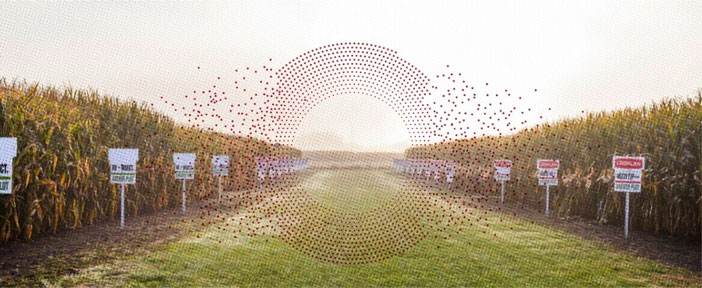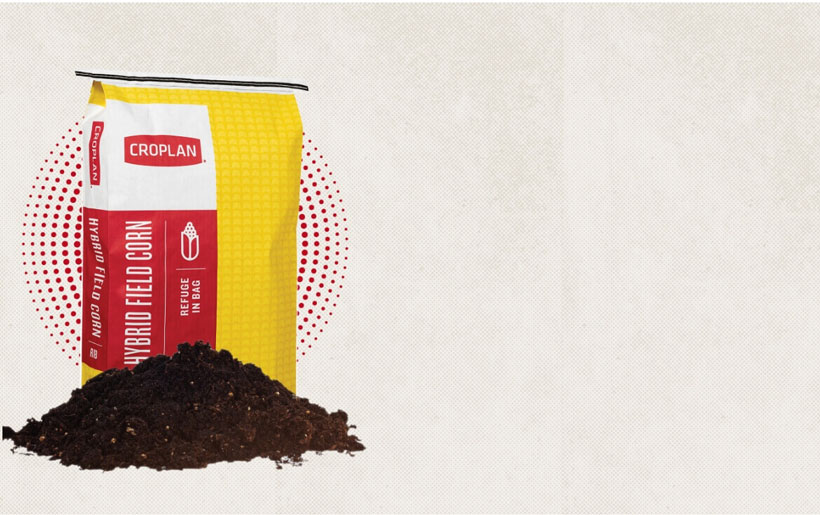Being labeled as “picky” usually isn’t a good thing.
But go right ahead and call Hector De Leon, Ph.D., picky. In his job, as Director of Seed Products where he leads a team in bringing forward seed advancement classes for CROPLAN® seed, he embraces it. And growers reap the rewards.
“CROPLAN seed has great relationships with all the major genetic and trait suppliers in seed,” says De Leon. “That gives us the ability to pick and choose the best genetics and traits from across the industry when putting together a lineup of products that can deliver a high likelihood of success in the field for growers.”
So, when De Leon says he and his team of seed product managers can pick and choose from the very best traits and genetics, what exactly does that mean? And how does it benefit CROPLAN retailers and their growers?
CROPLAN seed has broad industry partnerships that allow for access to top traits and multiple germplasm pools in corn and soybeans. Want to plant Enlist®? Got it. SmartStax®? Got that too. Trecepta®? You get the picture.
“Accessibility to the top genetics and traits allows us to understand what the seed landscape looks like, see what the strengths and weaknesses are for each set and then start to form the foundation of the CROPLAN lineup,” says De Leon. “It gives us the ability to review and compare everything coming into the marketplace at the same time.”
That accessibility will likely pay even greater dividends in the very near future. Why?
PRODUCT SELECTION STARTS IN THE LAB, THEN MOVES INTO THE TRENCHES.
But the key benefit of accessibility to a broad range of genetics and traits is that it makes it easier for the team to take the first step in bringing forward products that match grower needs and preferences across the country. The more options and technology available to them, the more dialed in they can get when carefully selecting and pairing genetics and traits to take the form of potential product advancements. The next step is what really differentiates CROPLAN seed. It starts with putting potential product advancements
through the paces in the WinField United Answer Plot system, which consists of locations across the U.S., each testing and retesting seed in local soils. This rigorous testing generates more than 6 million data points each year to help evaluate current products in testing, but also helps shape future products.
“It’s critical to see how the products and traits perform in different soil types and environments with our own eyes,” says De Leon.
This also serves to give seed product managers and retailers first-hand experience with advancing products before they become commercially available and ultimately provides them with the information needed to properly position and manage new products for success on growers’ acres.
One of those seed product managers in the trenches is Carl Scholting. He covers Nebraska, Kansas and Colorado for CROPLAN seed.
“I travel across my geography meeting with retailers and growers and visiting fields all summer long to best understand what’s working and what’s still needed. It’s a very hands-on approach and it helps us find diamonds in the rough within our geographies that fit growers’ unique local conditions.”
And while the proving grounds provide accurate data on how well new products and traits perform in local fields, it’s not reserved only for CROPLAN products. A unique benefit of Answer Plot testing is that it also includes unvarnished, side-by-side results for competing products as well.
“We offer a transparent opinion of everything we test, including our partnered products,” says Scholting. “It’s about showing a thorough and honest assessment of performance, and I think our customers really appreciate that.” The latest Answer Plot harvest results can be found here.

In addition to the insights of the Answer Plot system, CROPLAN seed leverages the WinField United Innovation Center. Based in River Falls, Wi., this 55,000-square-foot controlled testing ground does everything from product testing and development to examining herbicide tolerances or how certain adjuvants interact with new modes of action. The insights generated here help further maximize the efficacy of new technologies and traits.
New products like CP5682 TRE are a result of the team’s commitment to being picky. Picky about what genetics and traits to use, picky about measuring real-world performance, and ultimately, picky about what products make it into a CROPLAN seed bag.
You could say it’s pickiness with a purpose, and for growers it breeds confidence when adopting the latest traits and technologies and delivers consistent performance gains season after season.
STORIES FROM THE FIELD
CROPLAN takes your success personally because our loyalty is to you and your fields, so naturally, we love to share the stories of how fellow free thinkers are finding success in the field. Here’s a few of our favorites.
PLAYING THE DATA GAME
Farmers have more data at their fingertips than ever before. A trusted advisor is key in helping apply it to their acres.
THE TRUST FACTOR
Farming forces tough decisions every season. A trusted advisor can help turn sleepless nights into more potential bushels per acre.
LEGAL: © WinField United. Advanced Acre, Answer Plot, CROPLAN and WinField are registered trademarks of WinField United. All other trademarks are the property of their respective owners.
1 2024 Answer Plot data.






